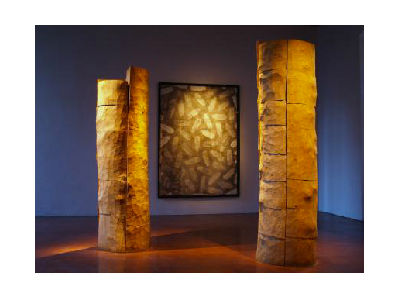Thursday 22 March at 12.30pm
On the principle of an ABC.... : In the form of an open dialogue with the public, this programme of gatherings launched in 2006 explored the museum's collections and the vocabulary of contemporary art.
"In essence, equilibrium is organic. Chemistry, mechanics, economics, biology, mathematics all have something to say about the necessity of balancing the forces between the components of a system. Equilibrium equals balance.
In French, "faire les balances" means doing a sound check before a concert. If the voices are 'balanced', none of them is overpowering out and the right harmonics are achieved. And if you're unbalanced, you could tip into insanity.
For it is upon cancelling out forces that equilibrium depends, and [that] procures a state of rest. The stability of a position can come from one foot, even upside down. The acrobat tests his limits. Will he, won't he fall?
Achieving balance depends on the cerebellum and inner ear functioning well. Otherwise, they must be seriously disrupted for him to lose his balance. In another way, a dynamic balance is sought by compensating the forces of inertia or achieving a static balance by placing the centre of gravity at the axis of the rotation. Whatever the case, balance always comes down the right combination of forces. As a tool, it offers the constant promise of harmony, whether in economics (the balance between supply and demand), finance ( balancing the budget) or the environment (balance in the ecosystem). Equilibrium is a sort of utopia, in other words, a space that doesn't exist; forever in the future, always out of reach.
Which is to say that instability stalks us, and that between being unbalanced and actively seeking an equivalence of forces and simply being unbalanced, there is sometimes no more than a hairs' breadth.
Conversely, it hardly bears pointing out that if we are all in search of equilibrium, doesn't it follow that we are all out of balance though we are persuaded that we aren't? The artist is a tightrope walker. He knows that it isn't because he grips the wire that he is weightless. But he also knows that to stay there, the approximate is forbidden to him. The artist is a fly which seems to twirl around and around but which never loses sight of its landing point."
(Jérôme Gallician)
The work considered by Jérôme was Bois, deux éléments(1981) by Toni Grand.
